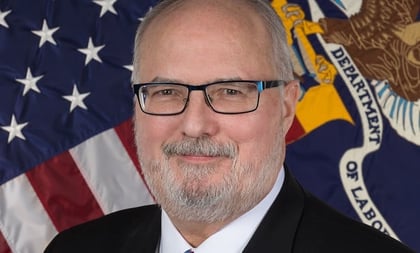Some people are asking the Trump administration to make its proposed multi-state association health plan program more flexible and more generous.
Some are warning the administration that even the flexibility and patient protection rules built into the current AHP proposal will cause many, or most, AHPs to spiral down the drain.
Some are giving the administration ideas for ways to keep AHPs out of the drain.
The Employee Benefits Security Administration, an arm of the U.S. Department of Labor, released the proposal in January. Many organizations already sponsor single-state AHPs. The EBSA proposal would make it easier for small employers to join multi-state AHPs. The AHPs might enjoy some of the same flexibility that large-group health plans now enjoy, but they apparently would be subject to Affordable Care Act requirements.
EBSA would promote multi-state AHP use by changing the definition of “employer” that DOL uses when deciding whether the employers in a group have enough in common to team up to sponsor a health plan. EBSA has suggested that any bona fide association could set up an AHP for small employers, even if the association had no purpose other than to provide AHP coverage.
(Related: 7 Facts About the Trump Team’s New Association Health Plan Proposal)
EBSA had received more than 700 comments by Tuesday, the commenting deadline. At press time for this article, it had posted 718 of the comments, and two petitions, on the web.
The Senate finally confirmed Preston Rutledge, President Donald Trump’s EBSA chief, in December. Many of the commenters have submitted professionally crafted paper letters addressed directly to Alex Acosta, the Labor secretary, or to Rutledge.
Others have used the federal government’s Regulations.gov system to file comments under the name Anonymous.
A copy of the proposal is available here.
Copies of the comments are available here.
Here’s a look at some of the ideas we found in the comment letters we sampled.
1. Misery
Many commenters have written to say that are having a hard time finding health coverage they can afford.
One farmer wrote, anonymously, that his family lost access to group health coverage when the rules changed, and his business was required to have at least one non-family-member employee to qualify to buy group coverage. The man said he and his wife have tried to cope by getting health care cost-sharing ministry plan coverage, which is not regulated by any state or federal regulator, for themselves, and Children’s Health Insurance Program coverage for his two sons.
A real estate agent from North Carolina begged regulators to help real estate associations provide AHP coverage. She said that getting ACA-compliant individual coverage for herself and her husband would cost about $2,000 per month. “We certainly cannot afford it,” she wrote. “Having affordable health care with menu options, such as maternity and psychiatric care not needed or wanted, would drive down the costs.”
But Kevin Longino, a kidney transplant patient and the chief executive officer of the National Kidney Foundation, wrote that people with serious health problems could suffer if they enroll in AHPs are not subject to the current Affordable Care Act benefits requirements.
Even if an AHP “covers kidney transplants,” it could discriminate against transplant patients by refusing to cover the drugs transplant patients take after they get the transplants, Longino wrote.
Longino warned against the idea of letting employers and individuals reduce their health coverage costs by doing without benefits such as transplant coverage. “People purchasing health insurance through an AHP, unaware of their future health status, may later learn that they don’t have coverage of critical benefits when they most need them,” Longino said.
2. Pleas for tweaks
Many commenters wrote to EBSA to ask for modest changes in the AHP program design, or to ask that the program be made more appealing for employers, associations or workers.
Wendy Block wrote on behalf of the Michigan Chamber of Commerce, to object to the idea that groups formed solely to provide AHP coverage could sponsor AHPs.
States have already had problems with the stability of multiple employer welfare arrangements (MEWAs), Block wrote.
“Allowing AHPs to be sponsored by artificial associations furthers the potential for less qualified, less scrupulous entities to enter the AHP space, potentially resulting in the creation of unsustainable AHPs, ” Block wrote.
Elizabeth Mendenhall, president of the National Association of Realtors, said the AHP program should be friendlier to self-employed people, including self-employed people who work only part-time.
Mark Koziel, an executive at the American Institute of Certified Public Accountants, asked EBSA to limit state-by state regulation of national AHPs. If a national AHP had to comply with 51 sets of state and District of Columbia laws, that could undermine the AHP program, Koziel wrote.
3. AHP reality checks









 March 09, 2018 at 12:21 AM
March 09, 2018 at 12:21 AM











